There’s a difference between ensuring that your family has enough food for rough times and preparing for a food crisis. Having a backup plan in case of an emergency is extremely important, especially if there is a food crisis.
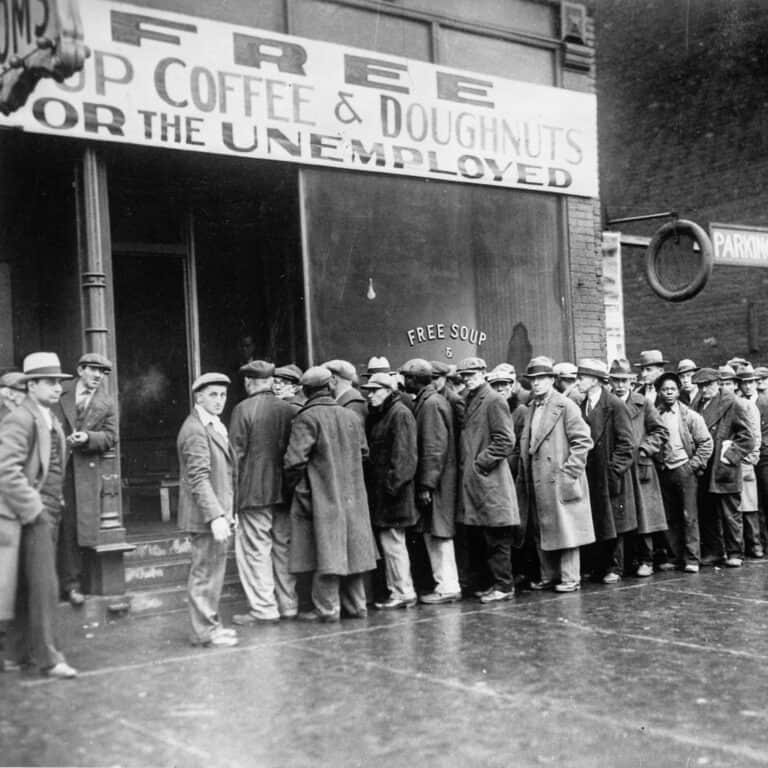
Although you are probably not a novice to all things prepping, in this article, we will give you a full guide on how to ensure that your friends and family do not face a crisis if the economy fails.
There are many reasons and situations in which crops do not grow or you are unable to purchase food to feed your families.
Though this article may help those who go through these situations, the information provided below is written mainly for those who are prepping for a long-term food crisis.
Table of Contents
Food Shortage Causes
Knowing why a food crisis is happening is just as important as preparing for it. It will give you an edge on ensuring you are ahead of the “game”, as well as know which items are top priorities to have.
Poverty
The main cause of a food crisis is poverty. This happens quite often in the poorer countries. Many Americans believe that poverty is not an issue within the United States; however, it can be one huge issue when TSHTF.
If the United States economy falls apart, then food will become extremely scarce due to the lack of importation.
A good example of this is during the attacks of 9-11. The impact was almost immediate and included long-term effects.
These attacks caused the Dow to fall over 600 points, resulting in the implementation of “The War on Terrorism”, a massive government-spending program.
Natural Disasters
Plenty of natural disasters can cause a food crisis: flooding, drought, tsunamis, hurricanes, and even earthquakes. Larger natural disasters can cause a large disruption to the commercial ways of feeding civilians.
You may have the money to purchase food, but if there’s no food available to purchase because of the commercial collapse from a natural disaster, then you will have to endure a food crisis.
A prime example of this type of situation is Hurricane Katrina. The hurricane hit in 2005 and stranded many people who had to endure hunger, scarce water, and limited emergency supplies for many days.
Though this was a big hurricane, an event even larger in size could happen and render a huge amount of our country defenseless against hunger and shortage of resources.
Government Issues
In the event of war, stock deliveries become far more difficult when workers are attacked and supplies are stolen. Government conflicts cause people to leave or lose their homes and food supplies.
They can’t afford to buy food or just stop anywhere and plant food. One of the deadliest wars was the African war that killed over five million people due to starvation and disease.
Dollar Collapse
Just like a domino effect, a currency collapse can bring with it a bunch of other disasters, a food crisis included.
When a dollar will only buy a nickel’s worth, many commodities we take for granted now will become unaffordable for most, and production will capsize as a result.
First, Get the Staples
The obvious thing to do to prep for all of these dangers is to ensure that you have sufficient food storage, because without food it’ll be hard to survive for long.
Food storage should be viewed as an investment. Although you will need to stockpile food that is non-perishable, you should also hoard things you’ll enjoy eating.
If the SHTF, you will be eating them for a very long time; so, you will need to get food that you actually like.
One of the main issues people face is how and where to store food. You will need to make enough space to keep your food safe from intruders, along with a plan for perishable foods and non-perishable foods.
You need enough space for your food: pantry, root cellar, basement. On top of that, you also need to control the humidity and temperature within the space to prolong the foods shelf life.
When you begin to stockpile food, you will need to decide on the types of food that you will want to store while also looking at the products shelf life. You can find even more long-shelf life foods here.
And don’t forget water: a person can live up to approximately two months without food, however, without water, it is a maximum of around 3 days of survival.
It is crucial that you have water in your food storage. Keep in mind that a person that is active will need at least half a gallon per day of water.
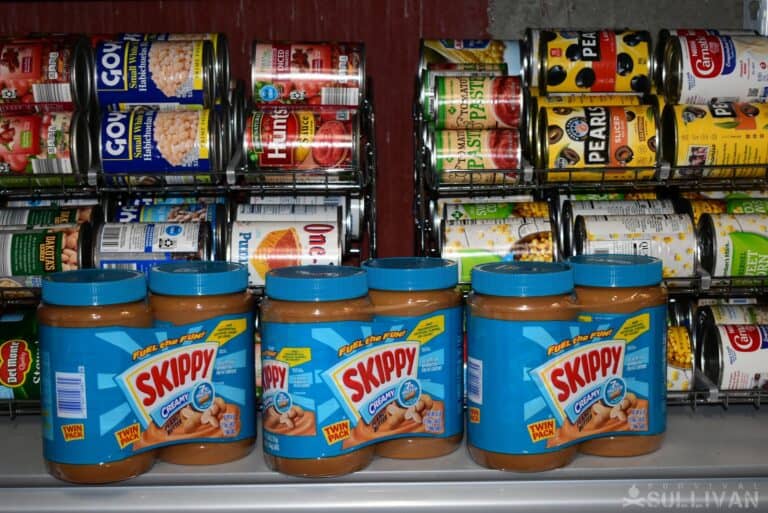
Salt: Salt is extremely useful. It will help you prolong shelf life for other foods. For example, it can be used to cure meat like beef. Salt does not have a shelf life; so, it will last forever. Make sure that you have a large supply of salt.
Supplements: Minerals and multivitamins help you stay healthy in case you need to skip meals to make the food last. It will give you the nutrients that you need from a normal diet, even if you are unable to have one.
Peanut Butter: This is a great source of fat, protein, and calories. It is good for at least 1-2 years. When your meat storage gets low, you can replace the protein with the peanut butter.
Fish: Fish has essential fatty acids and Vitamin D that will keep the immune system up. You will need to dehydrate fish, as well as purchase a canned fish to keep in the food storage.
Powdered Milk: Powdered milk includes twenty-one amino acids and is high in many different vitamins and minerals.
The typical amounts of nutrients included in the powdered milk are, 52% carbohydrates, 36% protein, 1.3% calcium, and 1.8% potassium. If you store the milk properly, it can last up to two years.
Rice: If rice is kept properly, it can stay good for up to ten years for even longer.
There are many dishes that you can make that incorporate rice. It will also stretch your meals further so that the other stored foods last longer.
Pasta: Dried noodles will also help stretch other foods and can be stored for an extremely long time.
Whole Grains and Flour: Grains are very cheap, and you can purchase them by the pound. If you own a grinder, then you can stock the whole grains even better.
Trail Mix and Nuts: These are high energy foods that will come in handy should TSHTF. They are very healthy for you and offer a convenient snack should your food storage become low.
Beans: This is a high protein food that you can store for a very long time. The shelf life will depend on how you store them, which we will cover later on in this article.
The shelf life for all of the dried beans is the same. They will last eight to ten years. We will talk a little bit about preserving beans in the following sections.
The types of beans that you can store are as followed:
- Blackeye Beans
- Adzuki Beans
- Garbanzo Beans
- Kidney Beans
- Great Northern Beans
- Lima Beans
- Lentils
- Mung Beans
- Pinto Beans
- Pink Beans
- Soy Beans
- Small Red Beans
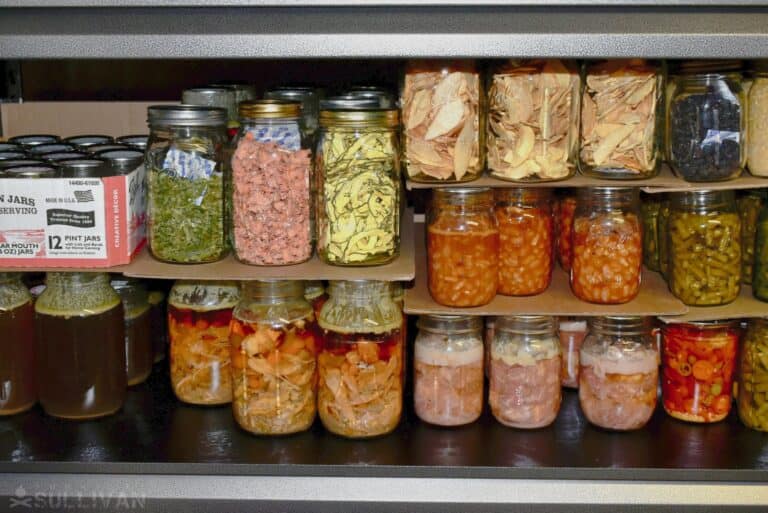
Canned Meat: Canned meat typically has a shelf life of six to ten years. They are an amazing source of protein. You should also can your own meat to keep your storage full and personalize your food storage.
Canned Vegetables and Fruits: This is not a good source of calories, but it is essential for proper nutrition.
Dried Fruits: Fruits are extremely important for potassium and fiber. They are extremely easy to store and have a very long shelf life. Good examples of this are raisins and apricots.
Lard: Lard will give you the needed calories during a food crisis. The cooking oils are extremely useful for other purposes, and it will keep for an extremely long time.
Honey: Honey is a natural sweetener and it full of minerals, antioxidants, and vitamins.
Gardening for Survival
Even though it is extremely important to store food in case of a food crisis, you will also need to learn how to produce your own food and store it to replace the food that you and your family consume.
If you reside in a city, it’s likely that you do not have a backyard to utilize for this. You should think of purchasing an acre of property to grow your own crops. The vegetables will need to be grown, harvested, and then dehydrated.
You can also have livestock on the property. If possible, it is also a good idea to move out to a farm right now, that way your bug out location will also be your home.
Although the root cause of impending food shortages is environmental, it is up to each individual to prepare for these circumstances. The most practical way to be prepared for food shortages is to produce it yourself.
Food shortages will affect everyone, rich and poor, however the less resourceful will suffer more severely than those who are prepared.
Preparing to garden for food sustenance should start before any real crisis occurs. Sites like YouTube contain videos about how-to gardening for survival purposes that can take you from gardening zero to greenthumb hero easily enough with some practice.
If you do not have a garden, or if you do but it is several years since you last gardened this section will help you jumpstart your survival food patch.
Though it is possible to live off only what you can produce yourself, a better option for most is the incorporation of gardening as a component of a well-rounded food survival plan.
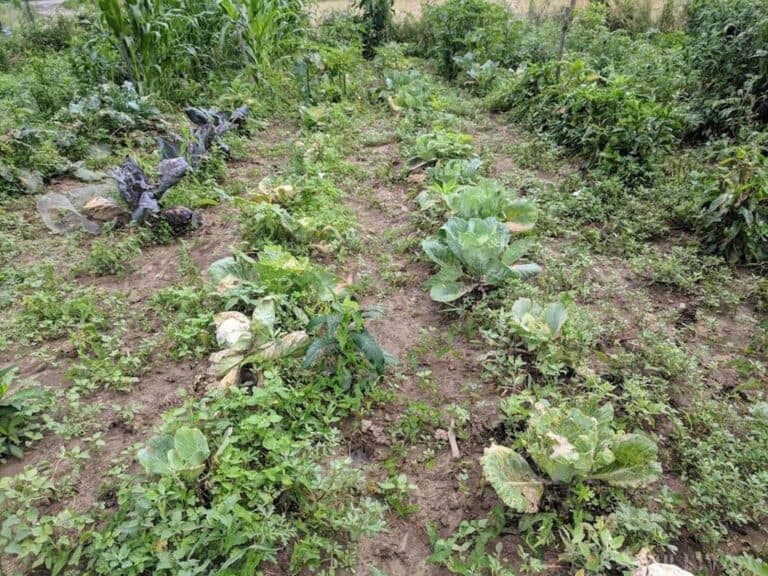
Know What Your Garden Can Do
Start by planning your garden. Decide what you want to grow and where you will plant it. You will need to consider the climate, sun exposure, soil quality, and drainage of your garden space.
When planning your garden, be sure to consider which crops are appropriate for your region. In some cases, specific crops may be more suited to certain climates or soil types.
For example, corn is a popular crop in the Midwest, but it would not do well in the humid Southeast.
Some general tips for growing crops in different parts of the country include:
- In the Northeast, focus on growing cold-hardy vegetables like kale, spinach, and broccoli.
- In the Southeast, try growing tomatoes, peppers, and sweet potatoes.
- In the Southwest, grow cactus fruits and vegetables like prickly pear and cholla buds.
- In the Northwest, grow varieties of beans, peas, and squash.
In addition to planting a variety of vegetables, be sure to include fruits in your garden plan. Fruits are a great source of vitamins, minerals, and antioxidants, and they can help to add flavor and variety to your diet.
- The Northeast is a great place to grow fruits like apples, pears, and blueberries. These fruits are hardy and can tolerate the cold winters and humid summers of this region.
- In the Southeast, you can grow a variety of fruits, including peaches, plums, and figs. These fruits thrive in the hot, humid climate. Other warm-weather fruits that do well in the heat include this region include bananas, grapefruits, and lemons.
A varied diet is important for two reasons. First, it ensures that you will have access to a variety of nutrients necessary for good health.
Second, it helps to prevent boredom with your food supply. When you are stuck eating the same things day in and day out, the temptation to give up will grow strong, and “menu burnout” can lead to frayed tempers.
Working with the Space You Have
You can start a victory garden in a small plot of land or even in containers on your balcony or patio.
If you have limited space, choose crops that are prolific producers like beans, peas, cucumbers, zucchini, and tomatoes. If you have more space to work with, you can grow larger crops like potatoes, corn, and winter squash.
There are also many crops you can grow indoors, even if you do not have access to outdoor space.
Potatoes and leeks are great indoor crops that produce without needing much space. Parsnips and carrots can be grown in 5 gallon buckets with some soil.
Other good options for growing inside include sprouts such as mung beans or lentils, and microgreens like cress or wheatgrass.
Even the most space-limited prepper can make use of racks or shelving with a few choice lamps for growing herbs and leafy, nutritious fare like spinach completely indoors. Don’t give up just because you don’t have a large parcel of land!
Irrigation, Soil, Fertilizer, Nutrients
After you have selected which crops are suitable for your region, get the soil in your garden ready for planting. Remember that you can improve poor soil by adding organic matter like compost.
When growing vegetables and other plants that will produce fruit, it is important to be aware of their specific nutrient requirements,
Most fruits require high levels of potassium to produce their crop, so be sure to provide adequate sources of this nutrient.
Take the time to learn specifically what your crops require, and learn the most efficient way to deliver those nutrients to the soil.
If your garden space has poor soil or you live in an arid climate like the Southwest, then plan on irrigating it as necessary.
If the produce from your garden starts to dwindle or die back, test the soil with an at-home kit to find the deficiency then fertilize them with a combination of compost and manure. This will get the soil in your garden back into peak condition for next year’s harvest.
Preserving Harvested Produce
Your garden will require a ton of time, effort, energy and a few tears if you want to see it produce.
It is also likely that your garden will produce more food than you can make use of before it spoils. For this reason preserving your harvest is essential to maximizing your return!
Berries and other small fruits can be frozen or canned. Larger fruits like apples can also be dried in order to preserve them for later consumption.
Root vegetables are great choices for storing over the winter months because they are hearty and can be left in the ground.
Beans, peas, and other legumes also store well. Remove the beans from their pods before drying them on a rack to allow proper air flow. After they are fully dry, store them in jars or bags for later use.
When it comes to preservation techniques, freezing is a very easy way to preserve food. Simply wash and chop your fruits or vegetables and place them in airtight containers or freezer bags.
Make sure to remove as much air as possible before sealing the bag, and label the contents with the date. The food will stay good for up to six months.
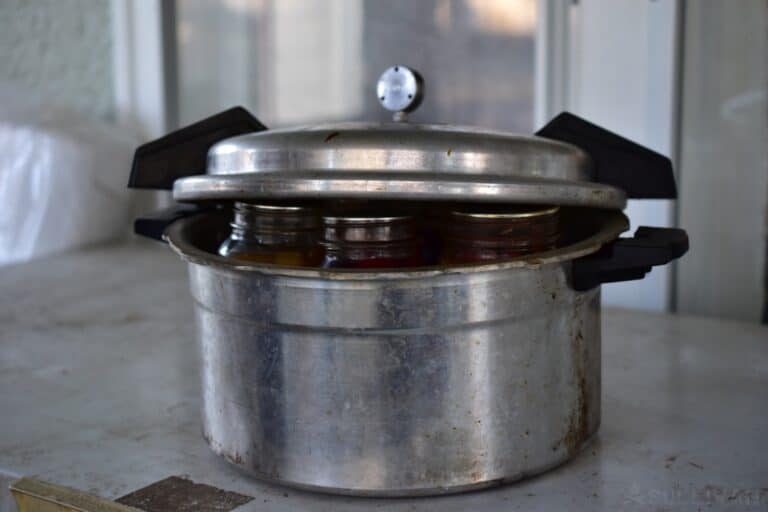
Canning is a little more involved, but it is a classic and time-honored “low-tech” method that all preppers should learn, and is a great way to store food for long periods of time.
You will need a water bath and/or a pressure canner and special canning jars with lids and rings. The lids create an airtight seal when processed in the canner that can keep your food safe and edible for years!
Raising Livestock for the Long Term
Raising animals to be eaten is not a job that every prepper wants to handle.
Nonetheless, you might change your mind should you find that the range of accessible meat suddenly becomes extremely limited in a post-collapse world.
Accordingly, you will need to learn how to raise and care for livestock in order to ensure your family has adequate meat.
Chickens and Rabbits
Many preppers, including suburban dwellers, may benefit from having a few chickens or rabbits in their preps. These creatures don’t need much space and they’re easy to feed, as they don’t require much attention and can forage on their own in a run or pen.
They are also simple to care for and maintain compared to other livestock. Chickens also provide a great bang for the buck as they can yield plentiful, nutritious eggs and meat.
Goats
Goats are another great choice for individuals who want to be able to feed their family without having to deal with too much responsibility compared to larger critters.
So long as your breed is adapted to the region where you live they may survive on nearly any type of vegetation and require minimal attention once they’ve been taught how to eat from a trough, bag, or other device.
Additionally, the goats will give you milk for far less investment than cows!
Pigs
Among the “big” livestock species, pigs have much to commend them if you can handle the drawbacks.
Pigs are omnivores, so they can be fed a variety of things including kitchen scraps, garden waste, and even table scraps. They are relatively easy to care for and can be raised in small spaces.
Pigs can also be slaughtered relatively easily and provide a lot of meat for the effort.
However, pigs can be extremely destructive, so fencing is necessary to keep them from escaping and wreaking havoc on your property and are also quite noisy in addition to requiring quite a bit of room, so they are almost certainly a no-go for urban and suburban preppers.
Also, pigs can be pretty dangerous, especially the big ones. There is a reason most farmers never enter the pens of larger pigs alone or unarmed!
Cows
Lastly, you have the quintessential livestock species: cows. Cows are a big investment-big payoff species in that are that are easy enough to contain and direct and can provide a lot of meat and milk.
They are also able to adapt to a wide variety of climates, so they can be raised almost anywhere in the world. Additionally, cows can be used as beasts of burden, meaning you can use them to pull carts or plows.
The main drawbacks to consider when raising cows are their size – they need a lot of room – and nutritional requirements, and the fact that they produce a great deal of waste.
Additionally, cows, bulls and steers in particular, can be quite dangerous, especially if you don’t know how to handle them.
They are large and powerful creatures! In the end, cows are suitable only for those with the space and means to handle them, but even a single cow that produces milk and is kept in reserve for slaughter might prove invaluable!
Where to Store Your Food
Of course, you will need to store food in certain locations so that you will have food on the way to your bug out location.
Here are different spots you can hide food for your family. Keep in mind that these spots are for foods that will not be harmed due to temperature changes.
- Basement: A good place to hide food in your home is the basement. You can use the air vents as a hiding spot. You will need to remove one of the vents that is on the side of the venting duct and put the preserves inside. You will need to be careful and make sure that you do not restrict the air flow in your vents.
- Closets and Bedrooms: You can store supplies underneath your beds, inside closets, and anywhere else there is room. A great idea is to store them in rolling containers to make it quicker and easier to take the food storage when TSHTF.
- False Walls: Many preppers install false walls to hide their supplies and food behind the wall to keep them safe from intruders.
Keeping Pests Out of Your Food Supply
Even if you don’t buy your food from a grocery store, or keep it in the pantry for long periods of time, there’s still a good chance that you will run across pests invading and destroying your food supply. This can be disastrous in a long-term survival scenario!
Everyone has heard at least one horror story about a pantry that was taken over by rodents, or a warehouse storing food that was infested with insects, both resulting in a total loss of the haul for fear of dangerous contamination.
The best way to protect against pests is the same for any storage situation. It’s important to keep your stored food in airtight containers, and make sure you store them inside your house in a cool dark place, away from possible invading animals.
Make sure there are no holes in any of the containers either – rodents can get through tiny cracks and start chewing on things if they find an opening, and only metal containers offer total protection against the sharp incisors of rodents.
For other containers, if there are small openings between the lid and the container itself, ants, weevils, mites, flies and other tiny creatures could still sneak into your food supply.
For long term storage containers it is recommended using hermetically sealing lids when ever possible.
Keep all food in dated containers so that it will be much easier to rotate the food supply and gives you an easy way to know how old any given package of food is.
As far as rodent control goes, it’s important that all areas where you store your food be kept clean and free from possible sources of water and shelter for rodents.
This means no standing pools of water anywhere near the storage area (old soda cans or other containers filled with liquid are a great place for mice/rats to hydrate), and also making sure there aren’t any holes in anything or anywhere they could crawl through easily.
Inspect storage areas frequently to make sure there isn’t any damage done by pests, or obvious signs of passage or intrusion. If there is, seal up those areas as soon as possible.
If you have a pet, make sure you check them too for any signs of infestation by insects, and take care of the problem right away before it spreads to your house and then to your pantry!
Start Prepping ASAP
No matter the reason for the food crisis, it is vital that you build up your food storage. Your family will depend on that storage during the crisis in order to survive.
But you should definitely take things farther than a stockpile…
Save seeds from fresh fruits and vegetables that you purchase to replenish your food storage later. Invest in a good dehydrator, or build your own to preserve your harvest. Start raising a few chickens and do it now, so you go through the learning curve before disaster strikes.
A multi-faceted approach is essential for ensuring that your food supply is durable enough to survive whatever challenges you are going to face in the post-SHTF world.
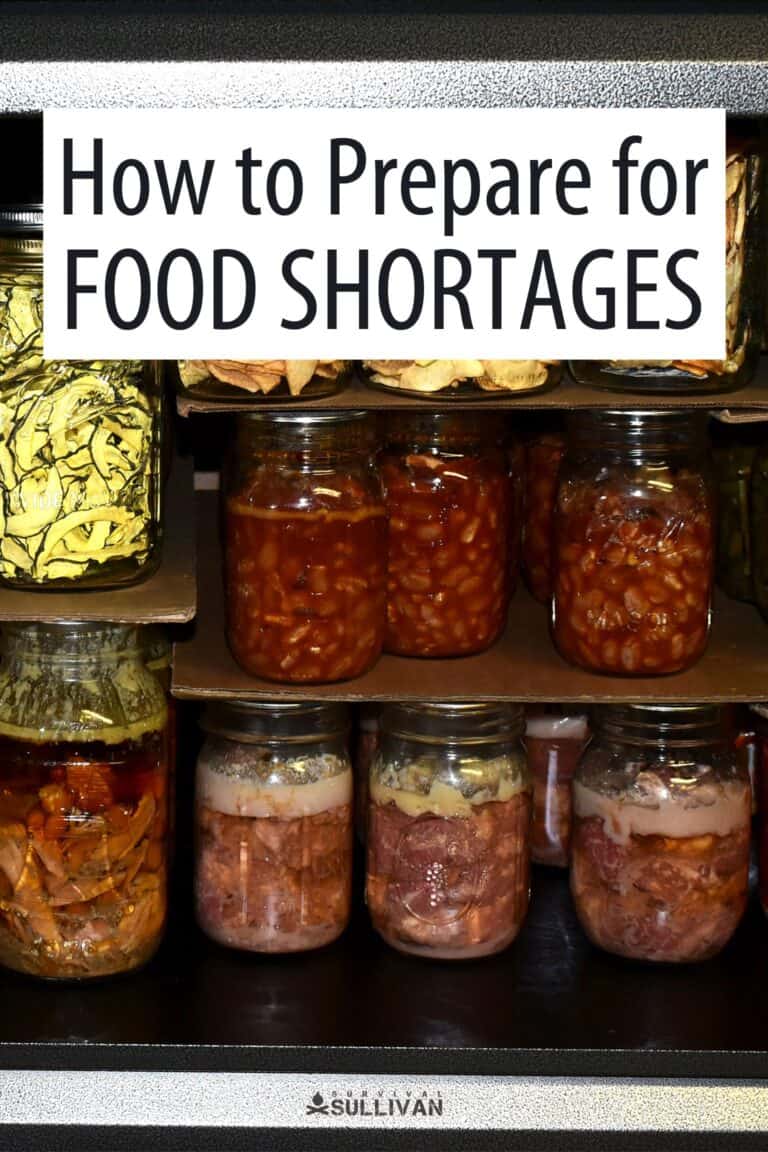

My name is Teresa Fikes. I am a Homesteader, survivalist, prepper, historian, and writer plus much more all in one package deal. I was raised on a small family farm were I was taught at an early age to survive off the land without the help of modern conveniences. I am a writer by profession and a Homesteader by Blood, Sweat, and Tears.

I don’t store dried beans(well, a few)…because of electricity and water needs..I have canned beans of many types since 2008 and they are fine when I open them.
Yes, more space needed..I stock by cases and stack. And of course, this is JMO.
I do the same. Dried beans to trade can beans to eat.
Dried beans can also be planted for more food source
Salt – 3 types to stock.
1. Iodised Table Salt has IODINE in it, using it will help prevent some medical conditions. You won’t need much, a single packet will last years.
2. ‘Lite’ salt has potassium in it – useful for DIY ‘rehydration drinks’ when you can’t buy Staminade, Gatorade, Powerade, etc.
3. ‘Cooking’ salt can be used to make ‘saline solution’ for wound care/cleaning. AND to create ‘chlorine bleach’ if you have a DC electric current – DIY ‘bleach’ won’t be as pure as commercial products, so may not be as safe for making water drinkable. Store heaps.
White Sugar can also be used for wound care – google ‘sugar paste wound care’.
Undercooked beans (Red kidney beans especially) can make you seriously ill due to a naturally occuring toxin in them. The toxin is destroyed/inactivated by proper cooking.